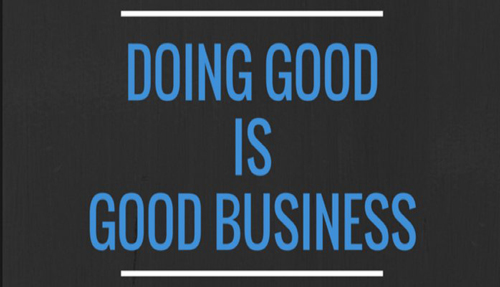June 13, 2016–You may remember Ogilvy’s advertising campaign for Nationwide at the Super Bowl, which focused on reducing preventable accidents at home. It was one of the most memorable commercials in recent years, and while it divided opinion, it succeeded in raising awareness for an important issue directly related to the company’s business imperative.
It should be obvious by now, but I can’t emphasize enough how critical good social practices are to a business’s success. As Sir Martin Sorrell said in WPP’s annual report this year, “Today’s business leaders understand that social responsibility goes hand-in-hand with sustained growth and profitability. Doing good is good business.” Customers are willing to spend more to reward a company that gives back to society, so failing to improve one’s practices will damage one’s bottom line.
Recently, I moderated a panel at the annual CECP Summit which invited leaders in CSR from all over the United States. A hot topic of discussion was the importance of integrating CSR into a brand. It is crucial that CSR is integrated throughout the brand – otherwise CSR efforts will fall flat. Below, I’ve laid out some key themes and action steps necessary to initiate a successful program.
Be Authentic About the Cause
It is vital that the cause is a true fit to the brand, which means the cause must live among the organization’s mission and strategy. Next, get everyone from the C-suite to the administrative staff on-board with the cause. The right cause will be a key pillar of the CEO’s business strategy and will inspire employees to share externally.
Align with Partners
Brands can better communicate their efforts by working with third-party influencers. In today’s cluttered space, it is crucial to partner with the right people to drive an authentic CSR program. If brands are finding it challenging to launch a CSR program on their own, they can partner with influential third-parties such as other nonprofits, academics, and government agencies who have established credibility on the issue. Brands have marketing power and audience reach that many nonprofits don’t, and cause organizations have values with which brands want to be associated.
Communicate the Good Work
The power of a strong social good campaign derives from telling the right message to key stakeholders at the right time and via the right channel. Savvy people want to know what companies are doing to make the world better. Earned media has proven to be the most effective channel in promoting a brand’s cause program because it builds third-party credibility.
Actionable Program — How To Do It
Now it’s time to pull all of your elements together into an actionable program. There are six core steps that are necessary for effective CSR communications.
- Public-Private Partnerships
Complex problems such as climate change can only be defeated with alignment between private and public forces. Each sector brings its own unique strengths to the table, so identify which agencies are already working in your area of interest, for instance the CDC or Consumer Products Safety Commission, and build a partnership. - Influencer Engagement
Your message is only as good as your messenger, and a CSR campaign’s effectiveness can hinge on the credibility of its spokesperson. Find an authentic third-party thought leader who supports the findings and can effectively communicate the goals of your CSR program. - Employee Engagement
Too often brands face the challenge of minimal return on investment on CSR programs due to lack of support from company executives and lack of engagement from the brands’ internal audience. Companies with successful CSR programs engage their employees to build loyalty, boost motivation and tap them for inspiration and ideas. - Earned Media Relations
Earned media is a key channel of influence because today’s savvy media consumer seeks it out, tweets it and shares it. Earned media provides a feeling of ownership that significantly increases word of mouth, which is the highest converter of action, so having a strategy is crucial. A social media strategy is also necessary because these platforms offer the most powerful way to directly engage with and hear from your audience. The real-time feedback will tell you immediately if your CSR message is working and whether your call to action is making an impact. - Paid/Owned Channels
The final piece of the communications puzzle is self-created and distributed content, including infographics and videos distributed on the company site and social channels, as well sponsored articles with traditional outlets. These materials offer greater control over the messaging compared to earned and social.
Incorporating the above techniques will help you create a standout CSR program. In today’s landscape, it is no longer a competitive advantage just to have a cause campaign because nearly every brand has a CSR component. To ensure success of a cause program, great companies know how to make cause a priority.


